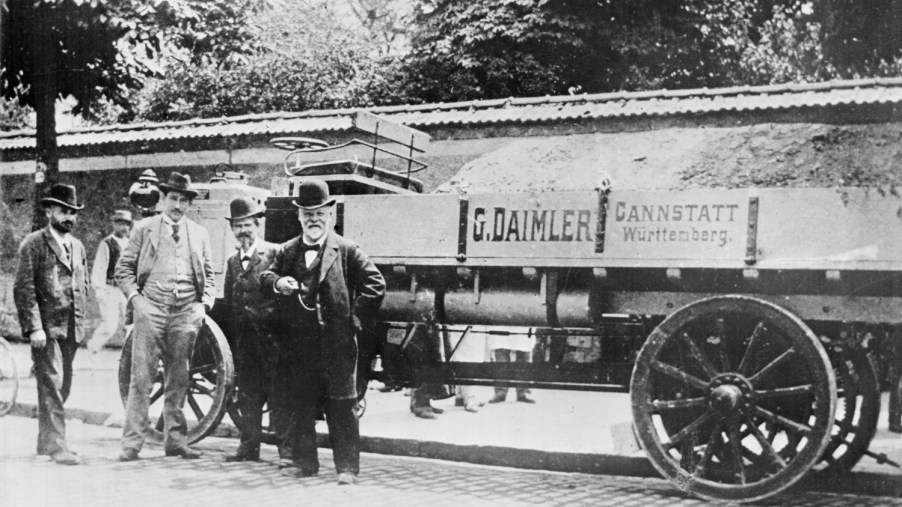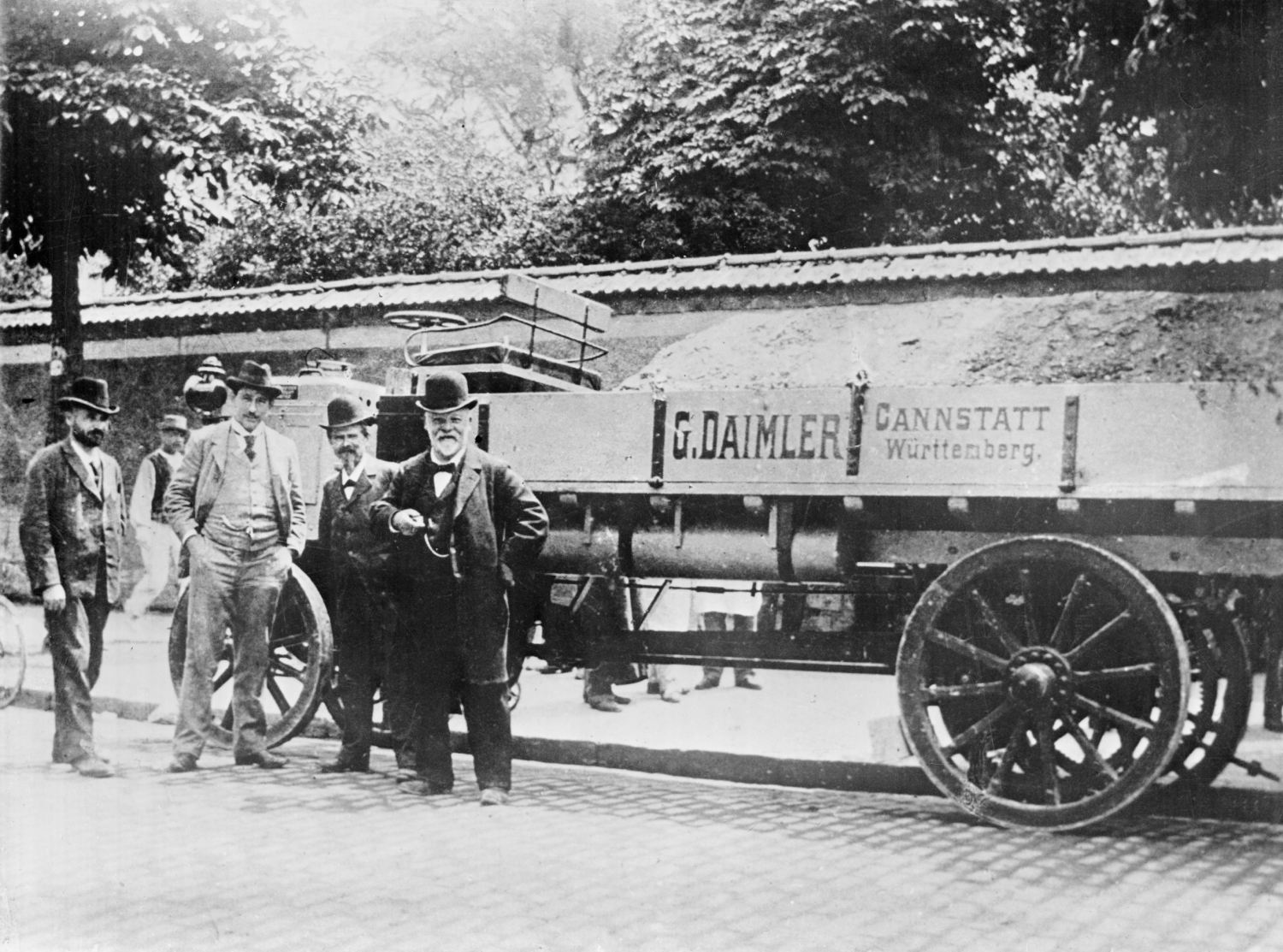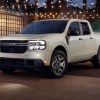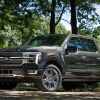
The First Pickup Truck Ever Made by Daimler-Motoren-Gesellschaft in 1896
Do you know who made the very first pickup truck? No, it wasn’t Henry Ford. It was actually created by a man named Gottlieb Daimler. Daimler was born in 1834 in Germany. If his name sounds familiar, that’s because his first company has evolved into Daimler AG. Some people might know the luxury brand by the name of Mercedes-Benz. The Daimler-Motoren-Gesellschaft pickup truck hit the scene in 1896, but wasn’t exactly popular right away.
The first pickup truck ever made was made by Daimler-Motoren-Gesellschaft in 1896

According to Mercedes-Benz, Daimler first invented the motorcycle and then the trolley car. He created a sort of mobile firetruck with a hose. Finally, in 1896, he developed the first pickup truck with Wilhelm Maybach’s partner. That’s right, the Wilhelm Maybach of Mercedes-Maybach ultra-luxury vehicles.
Anyway, the first truck looked like you might expect: a cart with an engine and four iron-clad wheels. The engine used in the first pickup truck was called the Phoenix and offered four horsepower. It had two cylinders and was located in the rear of the truck. Mr. Daimler connected it to the rear axel with a belt. Daimler and Maybach named it the Daimler Motor Lastwagen, or the Daimler Motoren Gesellschaft.
“Pragmatism was a hallmark of this vehicle with a coach-box, a vertical ‘cab’ reaching up towards the skies, as well as with a platform with the logo ‘Daimler-Motoren-Gesellschaft Cannstatt’ printed on the side.”
Mercedes-Benz Group
Long story short, the horse-drawn carriage had met its match. Daimler replaced the horses with an engine, and boom – the first pickup truck was born. The chassis was transversely mounted and used elliptic leaf springs on the front combined with coil springs in the rear. This was important because the engine was sensitive to vibrations and the roads weren’t exactly smooth.
The first pickup truck had to prove it was more economical than a horse-drawn carriage
Mercedes-Benz quotes Daimler as saying, “the compactness and elegance of the design, the noiseless and jerk-free operation and the odorless exhaust gases” was a significant benefit of the Phoenix engine. This engine was designed to use up to three fuels: gas, coal gas, and lamp fuel. The possibilities were endless!
Despite the endless possibilities, Gottlieb Daimler did not see success with the Daimler Motor Lastwagen. In England, there was more interest. The Red Flag Act kept horseless vehicles off the road and kept these vehicles from operating at more than four miles per hour. Coincidentally, the government abolished this act in 1896. Thus, there was room for the pickup truck.
Shortly after delivering the first to truck England, Daimler had a lineup with four more truck options available. Gottlieb Daimler and Wilhelm Maybach mode the six-hp, two-cylinder engine from under the rear floor to under the driver’s seat. The belt transmission moved with it.
The price of a horse-drawn carriage was much higher in comparison
When 1897 rolled around, the pair again moved the engine to its traditional place at the front. Daimler replaced the outdated “glow-tube ignition” with a “low-voltage magneto ignition from Bosch.” It ignited the gas and air mixture in the engine, which was now 2.2L. A new radiator was also on the way. By the time April 1897 was upon the designer, he had improved the cooling system to allow a higher power output. Daimler continued to improve on the pickup truck, working on the wheels next.
The success of the truck and other vehicles happened to coincide with the realization that horse-drawn carriages were expensive. A horse would cost 1,500 Marks at the time, and it needed to be fed and cared for year-round. Grooming was another 1,000 Marks annually. Daimler offered the 1.5-tonner (related to the payload capacity) pickup truck at 5,200 Marks. The five-tonner version cost 8,500 Marks.
At some point, people started to realize the benefits of the pickup truck outweighed the drawbacks. The pickup truck wouldn’t become popular until later, but that’s a story for another day.



